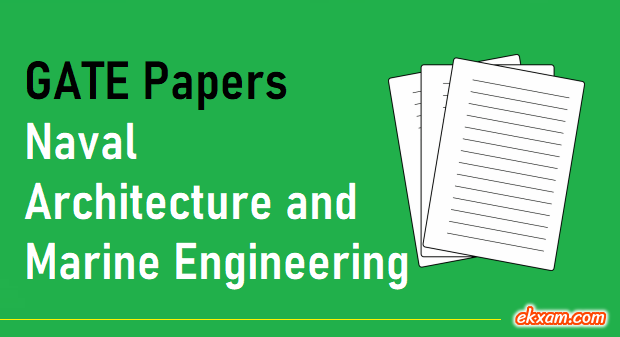Advertisements
Ratings
GATE ES Syllabus 2024 – GATE 2025 exam will be conduct by IIT, Roorkee on dates 1, 2 and 8, 9 February, 2025. Here we have provided latest Environmental Science and Engineering syllabus & paper pattern for GATE 2024 aspirants.
All candidates with Environmental Science and Engineering subject are advised to download this latest syllabus before starting their GATE 2024 exam preparation.
Contents
- GATE 2025 Highlights
- GATE Environmental Science & Engineering Paper Pattern 2024
- GATE Environmental Science and Engineering Exam Pattern Details 2024
- GATE Environmental Science & Engineering Syllabus 2024 PDF
- GATE Environmental Science & Engineering Syllabus for General Aptitude 2024
- GATE Environmental Science and Engineering Syllabus for Core Subjects 2024
- GATE Environmental Science and Engineering Weightage 2024
- GATE Environmental Science & Engineering Guidance
- GATE Environmental Science & Engineering Syllabus & Exam Pattern FAQs
- Related Links
- GATE Total Information & Guidance
GATE 2025 Highlights
| GATE 2025 Conducting Body | IIT, Roorkee |
| GATE 2025 Exam Date | 1, 2, 8, 9 February, 2025 |
| GATE 2025 Total Subjects | 30 |
| GATE 2025 Exam Mode | ONLINE Computer Based Test (CBT) |
| GATE 2025 Exam Duration | 3 hours (180 minutes) |
| GATE 2025 Total Questions | 10 (GA) + 55 (subject)= 65 |
| GATE 2025 Total Marks | 100 |
| GATE 2025 Question Type | MCQ, MSQ, NAT |
GATE Environmental Science & Engineering Paper Pattern 2024
| Paper Sections | Marks Distribution |
|---|---|
| Subject Questions | 72% of the total marks. |
| Engineering Mathemetics | 13% of the total marks. |
| General Aptitude | 15% of the total marks. |
GATE Environmental Science and Engineering Exam Pattern Details 2024
| Particular | Details |
| Examination Mode | Computer-based Test |
| Exam Duration | 3 Hours |
| Sections in GATE ES Paper | General Aptitude (GA) + Core Engineering Selected Subjects (Environmental Science and Engineering) |
| Distribution of Marks in GATE ES Paper |
|
| Marking Scheme | Questions worth 1 mark or 2 marks |
| Negative Marking |
|
GATE Environmental Science & Engineering Syllabus 2024 PDF
| General Aptitude Syllabus (Common to all papers) [pdf] | Download |
| GATE Syllabus for Environmental Science and Engineering (ES) [pdf] | Download |
GATE Environmental Science & Engineering Syllabus for General Aptitude 2024
| Topics | Subtopics |
| Verbal Aptitude | Basic English grammar: tenses, articles, adjectives, prepositions, conjunctions, verb-noun agreement, and other parts of speech Basic vocabulary: words, idioms, and phrases incontext Reading and comprehension Narrative sequencing |
| Quantitative Aptitude | Data interpretation: data graphs (bar graphs, pie charts, and other graphs representing data), 2-and 3-dimensional plots, maps, and tables Numerical computation and estimation: ratios, percentages, powers, exponents and logarithms, permutations and combinations, and series mensuration and geometry elementary statistics and probability |
| Analytical Aptitude | Logic: deduction and induction, analogy, numerical relations and reasoning |
| Spatial Aptitude | Transformation of shapes: translation, rotation, scaling, mirroring, assembling, grouping, Paperfolding, cutting, and patterns in 2 and 3 dimensions |
GATE Environmental Science and Engineering Syllabus for Core Subjects 2024
| Section 1: Mathematics Foundation | |
| Linear Algebra | Determinants and matrices, Systems of linear equations, Eigenvalues and eigenvectors |
| Calculus | Functions, Limits, Continuity, Differentiability, Local maxima and minima, Taylor series, Tests for convergence, Definite and indefinite integrals, Application of definite integrals to obtain area and volume, Partial and total derivatives |
| Differential Equations | Linear and non-linear first-order ordinary differential equations (ODE), Higher order linear ODEs with constant coefficients, Cauchy’s and Euler’s equations, Laplace transform and its application in solving linear ODEs |
| Probability and Statistics | Descriptive statistics, Measurement of central tendency, Dispersion, Skewness and kurtosis, Probability concepts, Conditional probability, Bayes theorem, Risk and reliability, Probability distributions, Correlation, Single and multiple regression models, Hypothesis testing (t-test, F-test, chi-square test) |
| Section 2: Environmental Chemistry | |
| Fundamentals of environmental chemistry: | Covalent and ionic bonding; Chemical equations, concentration, and activity; Structure and chemistry of organic molecules; Radioactivity of elements; Chemical equilibria; Thermodynamics and kinetics of chemical reactions |
| Principles of water chemistry | Water quality parameters and their measurement; Acid-base equilibria; Buffer solution; Carbonate system; Solubility of gases in water; Complexation, precipitation, and redox reactions; Inorganic and organic contaminants in water and their speciation |
| Soil chemistry | Organic matter, nitrogen, phosphorous, potassium, cation exchange capacity, base saturation, and sodium absorption ratio |
| Atmospheric chemistry | Composition of the atmosphere; Reactivity of trace substances in the atmosphere; Urban atmosphere: smog and particulate pollution; Chemistry of ozone formation; Chemistry of stratosphere |
| Section 3: Environmental Microbiology | |
| Prokaryotic and eukaryotic microorganisms | Characteristics of diverse groups of microorganisms; Classification of microorganisms; Microbial diversity; Plant-microbe and soil microbe interactions; Role of microorganisms in wastewater treatment, bioremediation, and biogeochemical cycling |
| Cell chemistry and cell biology | Structure of proteins, nucleic acids (DNA and RNA), lipids, and polysaccharides; Bonds in biomolecules; Stereoisomerism in biomolecules; Structure of cell; Structure and function of cytoplasmic membrane, cell wall, outer membrane, glycocalyx, chromosomes, endospores, storage products, mitochondria and chloroplasts |
| Microbial metabolism | Anabolism and catabolism; Phosphorylation; Glycolysis; TCA cycle; Electron transport chain; Fermentation; Anaerobic respiration; Energy balances; Enzymes and Enzyme kinetics |
| Growth and control of microorganisms | Bacterial nutrition and growth; Specific growth rate and doubling time; Monod’s model; Types of cultural media; Batch and continuous culture; Effects of environmental factors on growth; Control of microbes using physical and chemical methods |
| Microbiology and health | Pathogens and modes of transmission; Indicator organisms; Quantification of coliforms using MPN and membrane filtration techniques |
| Section 4: Water Resources and Environmental Hydraulics | |
| Global Water Resources | Structure, properties, and distribution of water; Water quality; Threats to water resources; Water conservation |
| Surface Water Resources | Hydrological cycle and water balance – precipitation, infiltration, evapotranspiration, and runoff; Flow hydrographs; Unit hydrographs; Stage-discharge relationship; Reservoir capacity; Reservoir and channel routing; Surface run-off models; Surface water management; Rainwater harvesting and storage |
| Groundwater Resources | Geologic formations as aquifers; Vadose and saturated zones; Confined and unconfined aquifers and their parameters – porosity, permeability, transmissivity, and storage coefficient; Darcy’s law and applications; Steady state well hydraulics |
| Environmental hydraulics | Concepts of mechanics; Properties of fluids; Pressure measurement; Hydrostatic force on surfaces; Buoyancy and flotation; Laminar and turbulent flow; Flow through pipes; Pipe networks; Boundary layer theory; Forces on immersed bodies; Flow measurement in channels and pipes; Kinematics of flow; Continuity, momentum and energy equations; Channel hydraulics – specific energy, critical flow, hydraulic jump, rapid and gradually varied flow; Design of lined and unlined channels |
| Section 5: Water and Wastewater Treatment and Management | |
| Water and wastewater quality parameters | Eutrophication and thermal stratification in lakes; River pollution: Oxygen sag curve |
| Water treatment methods | Screening, sedimentation with and without coagulation, filtration, desalination, disinfection; Water distribution and storage |
| Point and non-point sources of wastewater | Population forecasting methods; Design of sewer and stormwater sewers; Sewer appurtenances; Preliminary, primary, secondary, and tertiary sewage treatment; Sludge generation, processing, and disposal methods; Sewage farming |
| Sources and characteristics of industrial effluents | Concept of Common Effluent Treatment Plants (CETP); Wastewater recycling and zero liquid discharge |
| Kinetics and reactor design | Mass and energy balance, Order and rate of reactions, Batch reactors, Completely mixed flow reactors, Plug flow reactors |
| Section 6: Air and Noise Pollution | |
| Structure of the atmosphere | Natural and anthropogenic sources of pollution; Atmospheric sources, sinks, transport; Indoor air pollution; Effects on health and environment; Air pollution: gases and particulate matter; Air quality standards; Primary and secondary pollutants; Criteria pollutants, ambient and source standards, air quality indices, visibility |
| Particulate pollutants | Measurement and control methods; Control of particulate air pollutants using gravitational settling chambers, cyclone separators, wet collectors, fabric filters (Baghouse filter), electrostatic precipitators (ESP) |
| Gaseous pollutants | Measurement and control methods; Control of gaseous contaminants: absorption, adsorption, condensation, and combustion; Control of sulphur oxides, nitrogen oxides, carbon monoxide, and hydrocarbons; vapor-liquid and vapor-solid equilibria; Diffusion, Fick’s law, and interfacial mass transfer |
| Automotive emission controls | fuel quality, diesel particulate filters, catalytic convertors |
| Air quality management | Point, line and area sources; Inventory; Influence of meteorology – wind rose diagrams, stability, mixing height, topography, dispersion modelling, monitoring |
| Noise pollution | Sources; Health effects; Standards; Measurement and control methods |
| Section 7: Solid and Hazardous Waste Management | |
| Integrated solid waste management | Waste hierarchy; Rules and regulations for solid waste management in India |
| Municipal solid waste management | Sources, generation, characteristics, collection and transportation, waste processing and disposal (including reuse options, biological methods, energy recovery processes and landfilling) |
| Hazardous waste management | Characteristics, generation, and fate of materials in the environment, treatment and disposal |
| Soil | Soil contamination and leaching of contaminants into groundwater |
| Management of biomedical waste | Plastic waste and E-waste: Sources, generation and characteristics; Waste management practices including storage, collection and transfer |
| Section 8: Global and Regional Environmental Issues | |
| Global effects of air pollution | Greenhouse gases, global warming, climate change, urban heat islands, acid rain, ozone hole |
| Ecology and various ecosystems | Biodiversity; Factors influencing increase in population, energy consumption, and environmental degradation |
| Section 9: Environmental Management and Sustainable Development | |
| Environmental management systems | ISO14000 series; Environmental auditing: Environmental Impact Assessment; Life cycle assessment; Human health risk assessment |
| Environmental Law and Policy | Polluter pays principle, Precautionary principle; The Water and Air Acts with amendments; The Environment (Protection) Act (EPA) 1986; National Green Tribunal Act, 2010; National Environment Policy; Principles of International Law; and International treaties |
| Energy and environment | Energy sources – overview of resources and reserves; Renewable and non-renewable energy sources; Energy-Environment nexus |
| Sustainable Development | Definition and concepts of sustainable development; Sustainable development goals; Hurdles to sustainability; Environment and economics |
GATE Environmental Science and Engineering Weightage 2024
| GATE Environmental Science and Engineering Sections | Weightage |
| General Aptitude | 10 % |
| Mathematics Foundation | 10% |
| Environmental Chemistry | 4% |
| Air and Noise Pollution | 6% |
| Environmental Microbiology | 5% |
| Solid and Hazardous Waste Management | 9% |
| Global and Regional Environmental Issues | 3% |
| Environmental Management and Sustainable Development | 6% |
| Water and Wastewater Treatment and Management | 8% |
| Water Resources and Environmental Hydraulics | 4% |
GATE Environmental Science & Engineering Guidance
- How to Prepare for GATE Environmental Science and Engineering: A Comprehensive Guide
- GATE ES Previous Year Solved Papers – (2023-2021)
- GATE ES Syllabus 2025: Environmental Science & Engineering
GATE Environmental Science & Engineering Syllabus & Exam Pattern FAQs
What is the exam pattern for GATE Environmental Science and Engineering paper?
The GATE Environmental Science and Engineering paper consists of a single paper of 3 hours duration. The paper contains 65 questions carrying a total of 100 marks.
The paper is divided into three sections - General Aptitude (15 marks), Engineering Mathematics (15 marks), and Environmental Science and Engineering (70 marks).
The Environmental Science and Engineering section contains both multiple-choice and numerical answer type questions.
What is the syllabus for the Environmental Science and Engineering paper in GATE?
The syllabus for the Environmental Science and Engineering paper in GATE covers various topics related to the environment, such as ecology, environmental chemistry, environmental pollution, environmental impact assessment, water and wastewater treatment, solid and hazardous waste management, air pollution and control, and environmental laws and regulations.
What are the important topics for the Environmental Science and Engineering paper in GATE?
Some of the important topics for the Environmental Science and Engineering paper in GATE include Environmental Chemistry, Environmental Impact Assessment, Water and Wastewater Treatment, Air Pollution and Control, Solid and Hazardous Waste Management, and Environmental Laws and Regulations.
Is the Environmental Science and Engineering paper in GATE difficult?
The difficulty level of the Environmental Science and Engineering paper in GATE can vary from year to year. However, in general, the paper is considered to be moderate to difficult.
Candidates are advised to thoroughly study the entire syllabus and practice solving previous year question papers to get a better idea of the type of questions asked in the exam.
How can I prepare for the Environmental Science and Engineering paper in GATE?
To prepare for the Environmental Science and Engineering paper in GATE, candidates should first ensure that they have a strong understanding of the fundamental concepts and theories related to the environment.
They should also practice solving numerical problems and be familiar with the use of relevant software and tools.
Candidates should also solve previous year question papers and take mock tests to assess their preparation level.
What is the marking scheme for the Environmental Science and Engineering paper in GATE?
The marking scheme for the Environmental Science and Engineering paper in GATE is different for multiple-choice questions and numerical answer type questions.
For multiple-choice questions, 1 or 2 marks are awarded for each correct answer, while 1/3 or 2/3 marks are deducted for each incorrect answer.
For numerical answer type questions, 1 or 2 marks are awarded for each correct answer, with no negative marking for incorrect answers.
Can I use a calculator during the Environmental Science and Engineering paper in GATE?
Yes, candidates are allowed to use a scientific calculator during the Environmental Science and Engineering paper in GATE. However, programmable calculators are not allowed.
What is the qualifying marks for the Environmental Science and Engineering paper in GATE?
The qualifying marks for the Environmental Science and Engineering paper in GATE varies from year to year.
The qualifying marks are determined based on various factors such as the difficulty level of the paper, the number of candidates appearing for the exam, and the total number of available seats.
The qualifying marks for each year are announced by the GATE organizing committee along with the results.
Are there any good books to prepare for the Environmental Science and Engineering paper in GATE?
Yes, there are several good books available to prepare for the Environmental Science and Engineering paper in GATE. Some of the popular ones include 'Environmental Studies' by Benny Joseph, 'Introduction to Environmental Engineering and Science' by Gilbert M. Masters and Wendell P. Ela, 'Environmental Engineering' by Peavy, Rowe and Tchobanoglous, and 'Environmental Pollution Control Engineering' by C.S. Rao.
Recent Posts
- AAI Through GATE 2024 – JE (Junior Executive)
- M Tech and MS Programs Through GATE and GRE: Navigating Postgraduate Options
- Job Opportunities After GATE 2024 in India: What You Didn’t Know!
- BSPHCL Through GATE 2024 – 40 AEE
Related Tags
gate environmental science and engineering syllabus pdf 2025, gate environmental science and engineering previous year question papers 2025, Gate environmental science & engineering syllabus & exam pattern pdf 2025, Gate environmental science & engineering syllabus & exam pattern 2025, gate environmental science and engineering syllabus pdf 2025, gate environmental science and engineering question paper 2025, gate environmental science and engineering syllabus 2025, gate environmental science and engineering study 2025
Related Links
- GATE ES Previous Year Solved Papers – (2023-2021)
- GATE ES Syllabus 2025: Environmental Science & Engineering
| GATE (Reasoning & Aptitude & Maths) Books |
| GATE Guide Books |
GATE Total Information & Guidance
Click below given links to get further information.





